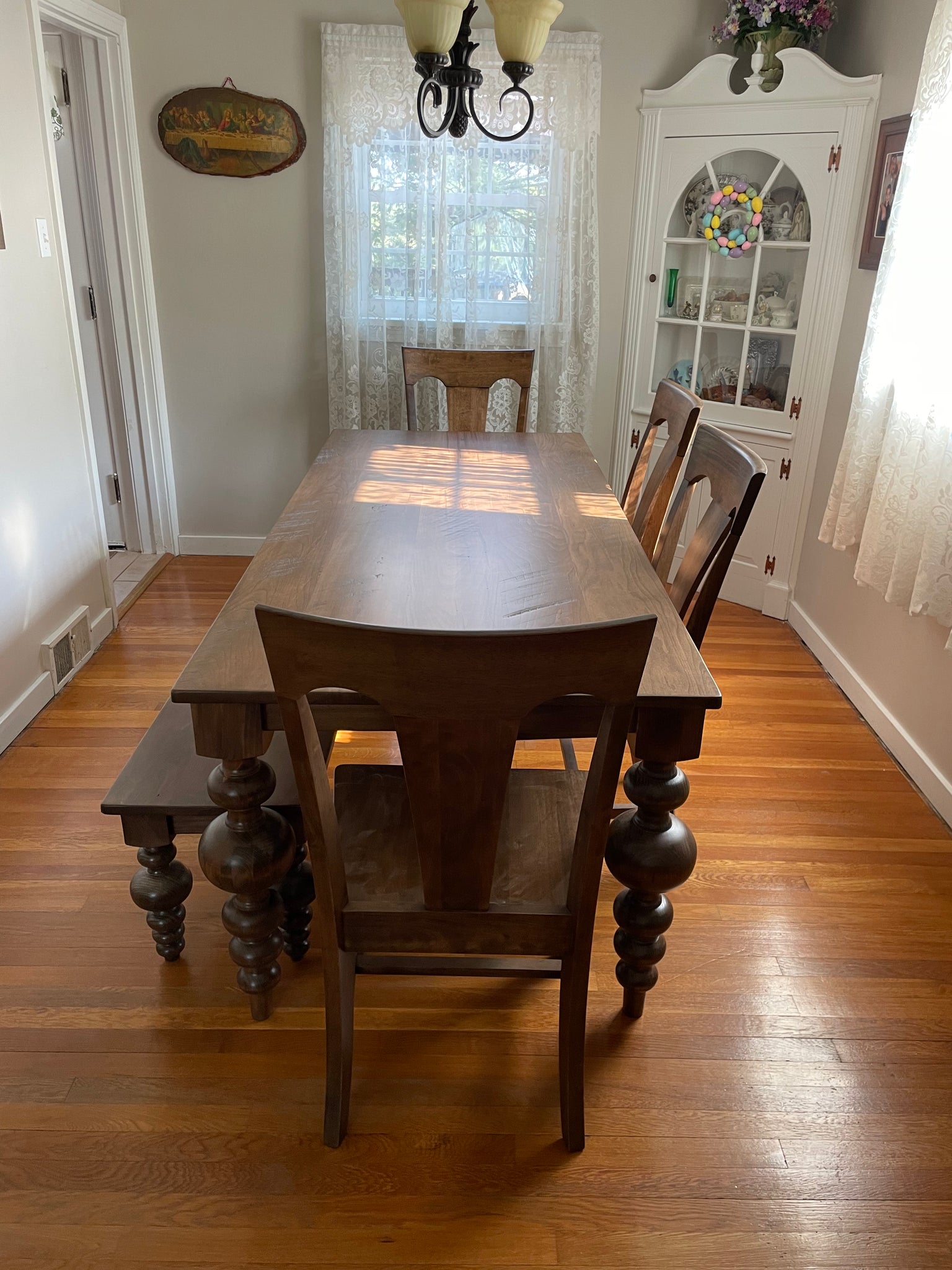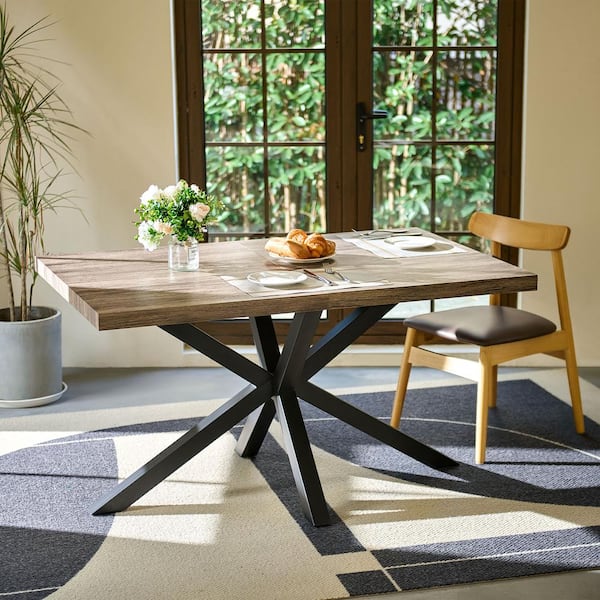Achieve Modern Elegance Making Use Of Sleek Dining Table Legs Wood Styles
Achieve Modern Elegance Making Use Of Sleek Dining Table Legs Wood Styles
Blog Article
Secret Variables to Bear In Mind for Eating Table Legs Timber Choices
When picking timber for dining table legs, a number of important factors necessitate careful factor to consider to ensure both capability and visual charm. The choice of timber type, defined by its longevity and distinct grain patterns, plays a pivotal function in the overall design and longevity of the item. In addition, one must ponder upkeep needs and the ecological implications of sourcing products. As these components intertwine, they dramatically affect the last end result of your eating table. However, recognizing the nuances of each factor can be complicated, leading to vital decisions that merit additional expedition.
Timber Types and Features
When selecting wood for eating table legs, it is vital to recognize the unique qualities of numerous timber types. Various timbers supply unique benefits and downsides, influencing both the resilience and aesthetic charm of the completed product.
Hardwoods, such as maple, cherry, and oak, are commonly preferred for their stamina and resistance to use. Oak, understood for its excellent longevity, also features a famous grain that can add character to the table. Maple supplies a smooth surface area and is much less susceptible to warping, making it a trustworthy choice for practical furnishings. Cherry timber, with its abundant shade that strengthens gradually, supplies a lavish look but may require even more maintenance to stop scrapes.
On the other hand, softwoods like want and fir are more budget friendly and easier to work with, yet they are much less long lasting than hardwoods. Pine is lightweight and features a cozy, rustic appearance, making it a popular choice for informal eating settings. It is more susceptible to damages and scrapes.
Comprehending these attributes will certainly assist in making a notified choice to guarantee the legs of the table fulfill both functional and visual needs.
Grain Patterns and Visual Appeal
The timber's grain is not merely a visual feature; it conveys a distinct individuality and beauty to each piece. Different wood varieties exhibit unique grain patterns, ranging from the straight lines of maple to the intricate swirls of oak and the striking number of walnut.
Additionally, the positioning and range of the grain can influence the regarded size and beauty of the table. Larger, extra noticable grains might provide a strong, remarkable effect, while finer, subtler grains can develop an improved, understated look. Additionally, the ending up procedure can even more enhance these patterns, highlighting the all-natural charm of the wood and drawing out rich hues.
Inevitably, the option of grain pattern should integrate with various other layout aspects, such as the tabletop and bordering furniture, ensuring a cohesive visual that elevates the dining experience. Thoughtful choice of timber grain not only adds to the table's beauty but also shows the proprietor's preference and design.
Resilience and Toughness
The longevity and toughness of dining table legs are critical considerations for making certain durability and security in any type of eating area. Selecting the ideal wood is critical, as various types show differing levels of resilience. Hardwoods such as oak, cherry, and maple are usually liked for their integral toughness and resistance to put on. These materials not just hold up against everyday use however also sustain hefty lots, making them ideal for eating tables that often accommodate several restaurants. Dining Table Legs Wood.

Eventually, investing in high-grade timber and durable building and construction methods will produce a dining table that stands the test of time, while giving a trustworthy structure for numerous meals shared amongst family and pals. Prioritizing toughness and strength makes certain that your table remains practical and aesthetically pleasing for many years to come.
Maintenance and Treatment
Correct maintenance and find out care are important for protecting the sturdiness and toughness of table legs made from wood. Routine cleansing is vital; utilizing a soft, damp towel makes certain that dust and particles do not gather, which can bring about scrapes and monotony. It is recommended to stay clear of rough chemicals or rough materials that might harm the finish.
Furthermore, using an appropriate wood gloss or wax occasionally can aid preserve the shine and protect the wood from dampness and spills. Nonetheless, it is important to comply with the producer's suggestions pertaining to the kind of item to make use of, as particular surfaces might respond detrimentally to specific chemicals.
Moisture and temperature changes can also affect wooden table legs, creating them to warp or fracture. It's best to put the table far from direct sunlight and warmth resources. Dealing with these quickly can stop more damage. if the table legs have any scratches or damages.
Finally, periodically checking the joints and screws for tightness is essential to keep structural stability (Dining Table Legs Wood). By sticking to these maintenance methods, property owners can guarantee their wood table legs remain functional and appealing for many years to find
Environmental Factors To Consider
When selecting wood for dining table legs, it's vital to take ecological factors to consider right into account. The sourcing and sustainability of timber are extremely important in decreasing environmental influence. Going with timber from qualified resources, such as those supported by the Woodland Stewardship Council (FSC), makes sure that the wood is collected responsibly, advertising forest conservation and biodiversity.

Moreover, regional sourcing of wood lowers transport emissions, sustaining local economic situations while reducing environmental impact. It is likewise suggested to be mindful of the timber's treatment and ending up procedures, as particular chemicals can be unsafe to both human health and the environment. By prioritizing sustainable timber options, consumers can contribute to click to investigate environmental preservation while enjoying the sturdiness and beauty of their table legs.
Verdict
To conclude, selecting timber for eating table legs necessitates careful factor to consider of various variables, including wood types, grain patterns, and resilience. The visual charm of distinct grain patterns can enhance the total style, while the stamina of woods makes certain durability. Upkeep demands and environmental sustainability more influence wood choices, see this page highlighting the relevance of sourcing from licensed or reclaimed products. An informed choice procedure ultimately adds to a visually attractive and functional dining space that lines up with sustainable practices.
When picking timber for dining table legs, a number of vital aspects warrant cautious consideration to make certain both performance and visual allure.Proper upkeep and care are important for protecting the longevity and toughness of dining table legs made from wood.When selecting timber for dining table legs, it's important to take environmental considerations right into account. By focusing on lasting timber choices, consumers can add to ecological preservation while enjoying the resilience and appeal of their dining table legs.
In conclusion, selecting wood for eating table legs necessitates cautious consideration of various aspects, consisting of timber kinds, grain patterns, and resilience. Dining Table Legs Wood.
Report this page